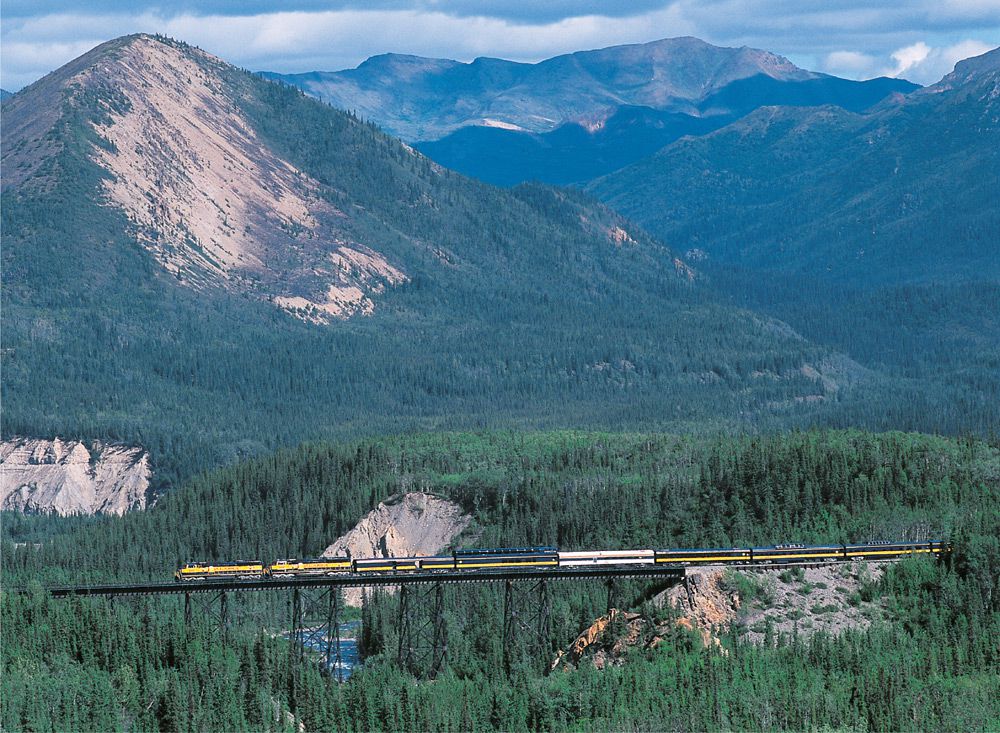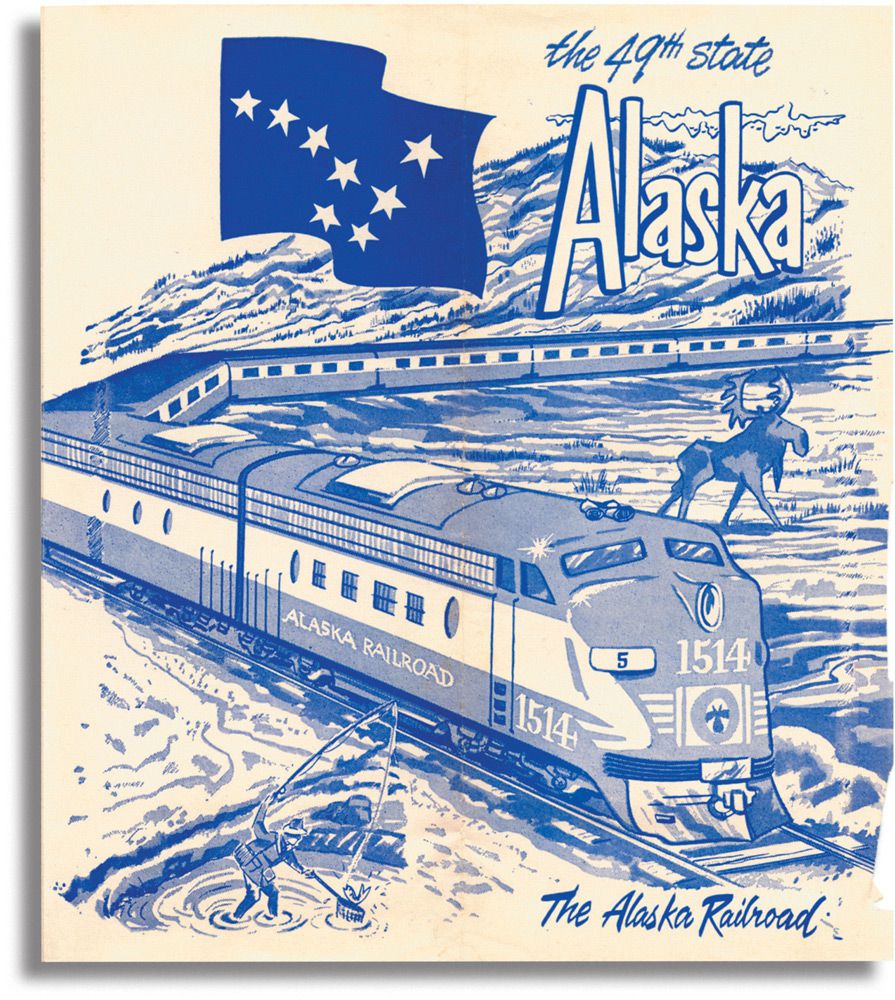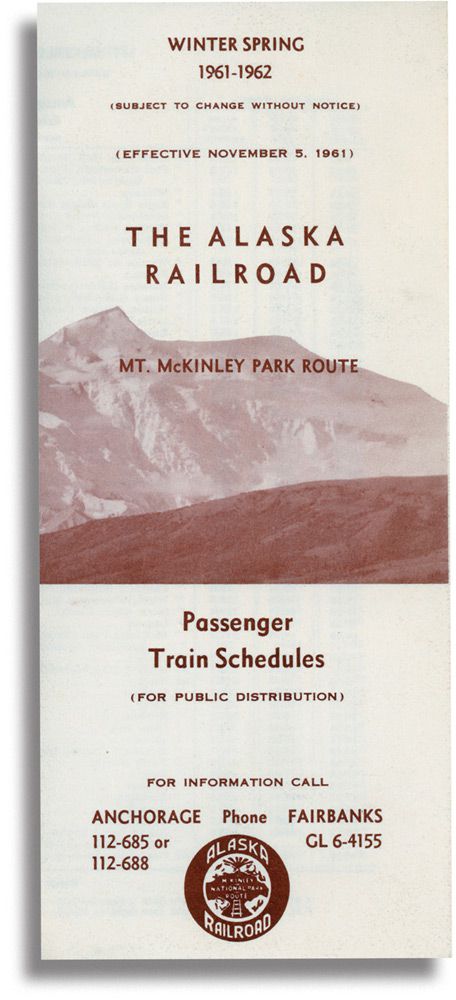
A pair of Alaska Railroad SD70MACs leads a northbound Denali Star across the Riley Creek trestle in Denali National Park, less than a mile from the park’s scheduled station stop. Scott R. Snell
The Alaska Railroad is an unusual American railroad for a variety of reasons: (1) it is nearly entirely a twentieth-century construction; (2) where most American lines were built and operated by private companies, much of the line was built by the federal government and federally operated until 1985, when the state of Alaska bought the operation; (3) the route is isolated from the rest of the North American network, relying on ships to ferry cars to and from its system; (4) the line still operates its own passenger service over most of its route mileage; and (5) as of 2011, it is the only line regularly to assign Electro-Motive SD70MACs to passenger trains.

A pair of Alaska Railroad SD70MACs leads a northbound Denali Star across the Riley Creek trestle in Denali National Park, less than a mile from the park’s scheduled station stop. Scott R. Snell
The antecedents of the ARR were privately funded lines, namely the 71-mile Alaska Northern that had built north from Seward and the narrow gauge Tanana Valley line. Both were taken over and melded into the federally sponsored ARR, which constructed more than 300 miles of line to connect Seward and Whittier with Fairbanks. President Warren G. Harding presided over the ceremony marking the line’s completion in July 1923.
Today, the Alaska Railroad remains a vital freight and passenger artery. Passenger trains are popular with tourists and operate year-round on regular schedules. A more intensive service operates between May and September, and includes the Denali Star (Anchorage–Denali–Fairbanks) and Glacier Discovery (Anchorage–Whittier–Grandview) services.
ARR was noted for its late use of Electro-Motive E- and F-unit diesels, several of which are preserved in the lower 48 states.

This timetable cover trumpeted Alaska’s great outdoors and newly acquired statehood. Solomon collection

Passenger timetable, 1961. Solomon collection